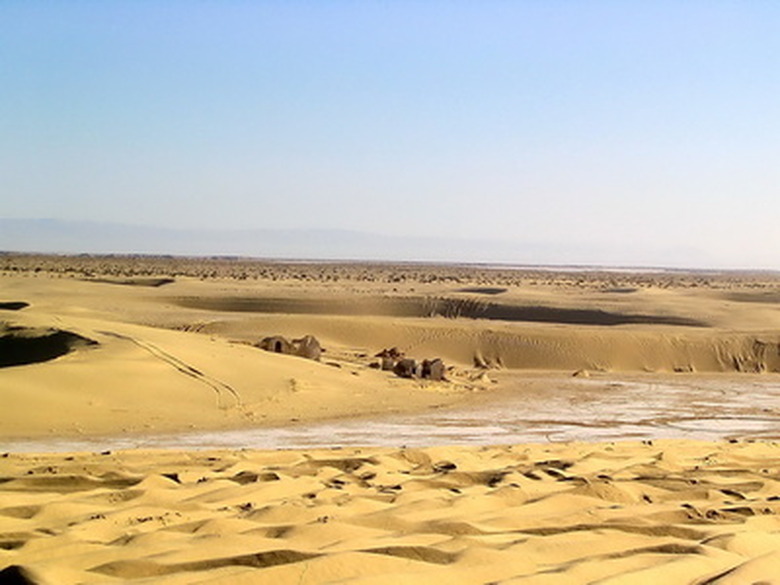Arabic Flower Names
Saudi Arabia is a country well-known for its desert conditions and is typically perceived as an area filled with vast expanses of barren landscapes. Despite the arid climate and dry soil, there are many types of flowers that can be found growing throughout Saudi Arabia, adding bright splashes of color to an otherwise stark scenery.
Yellow Broomrape
Yellow broomrape (Orobanche ramosa), also known as desert broomrape, flourishes in dry conditions and is typically found in the desert. This plant has thick green stems and usually grows to a height of between 4 to 12 inches. Yellow broomrape blooms snapdragonlike yellow flowers with pale pink edges, according to the Royal Embassy of Saudi Arabia website. Yellow broomrape blooms from late winter into the spring. When the plant is not in bloom, it is not visible above ground. Flowering is rapid, with the first blooms appearing six to nine days after stems emerge from the ground. Once the flower blooms, it usually lasts for only one week. Interestingly, members of this plant family are entirely without chlorophyll and are completely reliant upon other plants to obtain nutrients. Yellow broomrape, which is hardy to USDA zones 9 and 10, is toxic if ingested and can become invasive if not properly maintained.
- Saudi Arabia is a country well-known for its desert conditions and is typically perceived as an area filled with vast expanses of barren landscapes.
- Yellow broomrape (Orobanche ramosa), also known as desert broomrape, flourishes in dry conditions and is typically found in the desert.
Desert Hyacinth
Desert hyacinth (Cistanche tubulosa), referred to as dhanun in Arabic, is a parasitic plant that does not create its own chlorphyll and is completely lacking green foliage. Instead, desert hyacinth uses its long roots to take nutrients from nearby host plants. This plant flourishes in dry, arid conditions. It is tolerant of salty conditions and is often found along the coasts of Saudi Arabia. Desert hyacinth produces many tiny seeds that can remain dormant for years until germination is started by the roots of nearby plants. Desert hyacinth begins to bloom in March and continues to produce flowers into May, blossoming showy flowers in pyramidlike spikes, according to Saudi Aramco World. These bright yellow flowers have maroon edges. Desert hyacinth, which is often found growing along the coast, is considered an endangered plant. Desert hyacinth is hardy to USDA zones 9 to 11.
- Desert hyacinth (Cistanche tubulosa), referred to as dhanun in Arabic, is a parasitic plant that does not create its own chlorphyll and is completely lacking green foliage.
- Desert hyacinth produces many tiny seeds that can remain dormant for years until germination is started by the roots of nearby plants.
Black-Eyed Geranium
Black-eyed geranium (Geranium ocellatum) adds a bright splash of color with its showy flowers. Blooming begins in January and continues into February, according to the Arabian Wildlife website, producing magenta flowers with black centers. Black-eyed geraniums have slender stalks with circular leaves. This plant is unable to thrive in the shade, requiring at least six full hours of sun each day. Black-eyed geranium is more tolerant of soil conditions and does best in soil that is slightly moist. It is typically found growing on slopes or rocky clefts where the ground is somewhat wet. In the United States, black-eyed geranium is often referred to as Himalayan geranium because it is found growing at the base of the Himalayan mountains. This plant has several medicinal purposes, including its use as a diuretic and as treatment for kidney problems. Black-eyed geranium is hardy to USDA zones 3 to 8.
- Black-eyed geranium (Geranium ocellatum) adds a bright splash of color with its showy flowers.
- Black-eyed geranium is more tolerant of soil conditions and does best in soil that is slightly moist.
